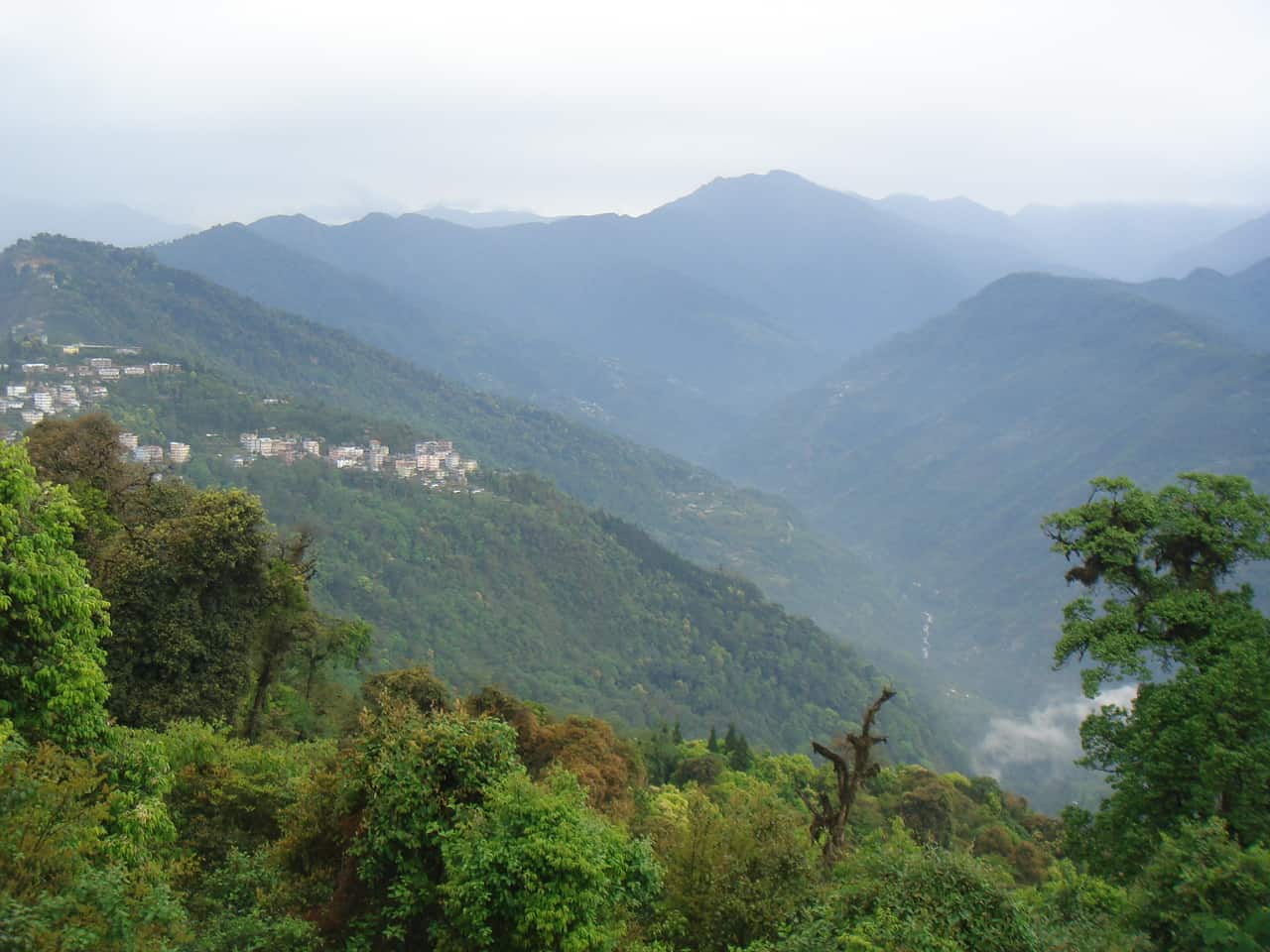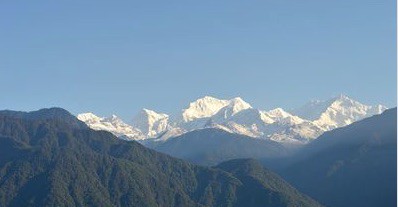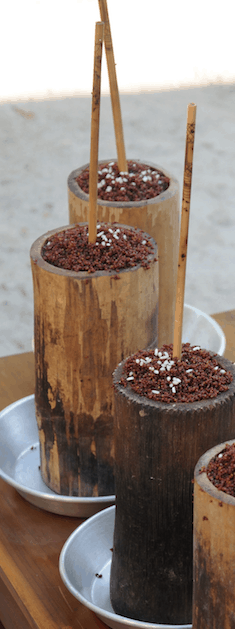Sikkim is located in Northeast India, above West Bengal and bordering Bhutan, Nepal and Tibet. It is a beautiful destination for a week’s vacation. For those who love the mountains, Sikkim is a must visit destination.
Travel into and within Sikkim
By air
The nearest aiport is at Bogdogra in Siliguri, West Bengal. Bagdogra is located about 124 kms from Gangtok, the capital of Sikkim. Bagdogra is well connected to major domestic airports in India.
A new airport at Pakyong, ~30kms from Gangtok was inaugurated in 2018 but has remained closed for quite some time now. If reports are to be believed, there are technical and operational issues that need resolution and it is unclear when the airport would be opened.
For those who wish to travel in style, helicopter services are available between Bagdogra and Gangtok but dependent on weather. I am told it is very scenic flight and on clear days, Mount Kanchenjunga and several other Himalayan peaks are visible. I guess that by itself would be value for money spent. The journey takes about 20 minutes only, compared to 5 hours by road.
By train
The nearest stations are New Jalpaiguri and Siliguri, about the same distance from Gangtok as the airport.
By road, a very scenic journey
Other than the helicopter, the only option to get into Sikkim is by road. Again a very scenic drive on national highway from Siliguri to Gangtok. The highway runs along Teesta river for a part of the distance and climbs from sea level to over 5000 ft. The road goes through Kalimpong, a popular hill station in West Bengal. The highway was well maintained generally when I travelled.
The drive is by and large safe but our driver did scare us by talking about how occasional rocks rolling down from the mountains can have a disastrous impact if it hits a moving vehicle. This is particularly common during the rainy season.
Overall, the journey can take upto 5 hours.
Travelling within Sikkim
I hired a car for the entire duration of the trip to Sikkim. Pick up from and drop to Bagdogra airport. I think that is the best option. I did not really check on self drive options, if available.
What to see in Sikkim
Sikkim is all about natural beauty and the Buddhist monasteries. It is home to India’s highest mountain peak, Kanchenjunga(or Kandchengzonga as it is called locally). There are several scenic spots but accessibility and quality of accommodation will have to be considered. I shortlisted the following places:
Gangtok, the capital of Sikkim, with a day trip to Tsomgo lake and Nathula pass
Pelling, the scenic hill station
Yumthang valley, called the valley of flowers and also known for its hot springs
Kanchenjunga Biosphere Reserve, rated to be a great place for nature lovers and for trekking. You can even trek to Kanchenjunga base camp.
Gangtok and Pelling are easily accessible with availability of quality accommodation. Since I was travelling with elders, I chose to stick to the easier options of Gangtok and Pelling.

View of Gangtok from the ropeway, Sikkim 
View from Pelling, Sikkim 
Mountain peaks visible from Pelling, Sikkim, India 
Himalayan peaks seen from Pelling, Sikkim
Darjeeling, a very popular hill station in West Bengal, is ~75kms from Pelling, perhaps a drive of ~2.5 hours. A visit to Sikkim can be combined with Darjeeling as well.
When to visit
Most of the tourists visit during the summer months of April to June. Low to Moderate temperatures make it the perfect time.
The rainy season of July to September is quite risky to drive around.
October to March is the winter and also a great time to visit Sikkim. There will be snow at higher elevations and possibility of roads being blocked due to snow are high.
Keep the following points before planning an itinerary.
- Nathula pass is generally accessible during the summer months.
- The best time to view the Himalayan peaks is said to be October to December.
- Gangtok and Pelling are accessible through out the year.
- Yumthang valley is best visited in April and May as flowers bloom during that period.
Where to stay
Gangtok
Sikkim hardly has any hotels from well known larger hotel chains. In Gangtok, there are plenty of choices for 3 star hotels as also budget hotels. If you are willing to spend ~ Rs 5,000 to 6,000 per night, there are very good options. The key decision is city centre(say near M G Road) or away. I chose Elgin hotels for my stay in Gangtok as well as Pelling.
There is Mayfair resort which I sighted about 10kms before reaching Gangtok. It is probably the most expensive in Gangtok but a bit too far. I stayed at Elgin Nor-khill resort near the city centre. It is a beautiful hotel, less of a resort as the open space is limited.
Do note that some hotels may be on a hill requiring a climb but that will not be a concern if you have a car.
Pelling
Pelling has limited choices when it comes to hotels. I chose Elgin Mount hotel near Pemayangtse monastery as the rooms here provide a fantastic view of the Himalayan peaks including Mt. Kanchenjunga. There are other hotels that provide similar views.
Vegetarian food is easily available
There are fully vegetarian restaurants in Gangtok. The local food is influenced by Nepal and also Tibet. So Momos and Thukpa are readily available. Dal Bhaat is popular quick option for lunch but if don’t like boiled rice, ask for regular rice. I also tried couple of local varieties of soups and bread.

I did not particularly like Chang, a local alcoholic drink that is served in a bamboo container and is sipped with a bamboo straw. Refill meant pouring hot water into the container! To be fair, I had not liked draught beer also when I had it the first time!
I preferred to try the local dishes at the hotel, rather than the restaurants. But head to M G Road to dine at restaurants.
How many days in Sikkim
5-6 days is the minimum for Gangtok and Pelling. Additional days would be needed for Yumthang valley(2-3 days) and Kanchenjunga Biosphere Reserve(1-2 days, unless you are going for trekking).
High altitude sickness
Unlike Ladakh where the average elevation itself is above 10,000ft., Gangtok and Pelling are well under 10,000ft. If you are planning to visit locations higher than say 10,000 ft, such as Nathula pass, Tsomgo lake etc., be aware of high altitude sickness. Normally, just a day trip to the higher altitude and back to Gangtok/Pelling in the evening should not cause any difficulty but some people may get affected.
Read my post on high altitude sickness written with specific reference to Ladakh.
Carry cash
Do carry some cash if travelling out of Gangtok. Credit cards will not work everywhere.
Sikkim is earthquake prone
Sikkim appears to be prone to earthquakes. There have been few mild to moderate earthquakes in the last 10 years. The entire Himalayan region belt and north east India fall in either Zone IV or Zone V, the highest two categories prone to earthquakes.
Is Sikkim worth visiting
Yes, but only if you are fond of the mountains. Even though the Himalayas stretch a long way, each place has something unique.
For more information
Visit the official website of the Government of Sikkim-
http://www.sikkimtourism.gov.in

